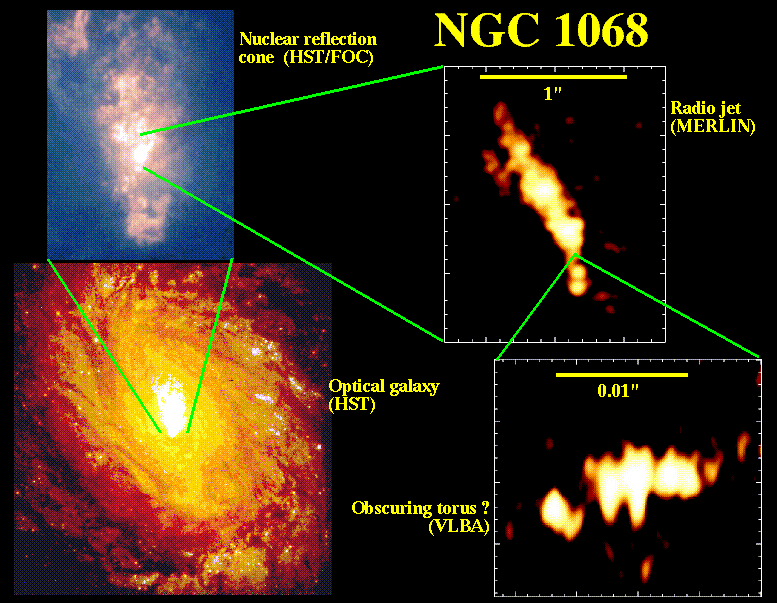
Measurements of the polarization of the light near the nucleus of NGC 1068, a nearby and prototypical type 2 Seyfert, provided strong evidence that it actually contain a type 1 nucleus which is blocked from our direct view by an obscuring ring or torus of material. The nucleus produces a radio jet at right angles to this hypothesized torus, which must lie almost at right angles to the galaxy's disk plane. Recent VLBI observations may have detected this torus, as shown in this montage. HST images are used to show the galaxy as a whole and the conelike illumination pattern of highly ionized gas which must see the nucleus directly, then the radio jet and finally a tiny structure which has the right size, orientation, and temperature to be the obscuring disk. If this in fact the obscuring material, this is an important piece of evidence for the unified scheme for Seyfert galaxies. This is simply the notion that many type 2 Seyferts would be type 1 objects if we could see them from the proper direction, nearly along the axis of the torus so that our view is not blocked. These special directions are often marked by both radio jets and cones of intense radiation, which we see either as they ionize ambient gas or are reflected from clouds rich in dust that happen to lie within the cones.
The radio data include a VLBI image from 10 elements of the VLBA plus the phased VLA for the inner torus and a MERLIN observation of the radio jet, provided by Jack Gallimore and discussed by Gallimore, Baum, and O'Dea in Nature 388, 852 (1997); special thanks to Jack for pointing out that the forst version of this montage put the nucleus 0.3 arcseconds too far north. The optical images are from HST, including the FOC image of the inner emission region that was released publicly immediately after the 1993 servicing mission.